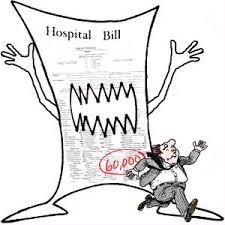
Finally! Humira’s biosimilars also hit the us market!
Humira was first marketed in 2002 and was protected in the US market until 2023, thanks to AbbVie’s use of two strategies :

Following up on our introduction to the TiC (Transparency in Coverage ) rules., this paper provides practical advice on where and how to find information on hospital prices, and how employers and their workforce can use it to their advantage.
Hospital services are generally split in two main types of services: Inpatient and Outpatient. Together they represent nearly 50% of a Healthcare plan spending. Prices are free, set in a document called chargemaster, mostly kept secret. Insurers built networks of hospitals, negotiating rates. Price variations between hospitals are huge, and prices also vary within any given hospital depending on who the payer is.
When plan members choose to receive a treatment outside of their carrier’s network, they are exposed to “Surprise Billing”. This practice frequently made the news headlines over the past decade and is amplifying the medical debt problem, itself a major cause of personal bankruptcy in the US.

“In fact, even before the TiC rules, prices were available by simply asking them, thanks to an ACA requirement”, said Leon Wisniewski, founder and CEO at Healthcostlabs. (https://www.healthcostlabs.com/).
Leon worked a long time for insurers as an actuary. Leon is a strong advocate for affordable and quality healthcare and shares his insights about Data Usage Agreements (DUA’s).
He has built a service providing clients with lower cost alternatives using millions of rates grouped by MSA Regions, insurers and health plans, hospitals, and services. The data comes straight from hospital files. As of today, he has roughly 60% of all hospitals in his database and is constantly updating it.
He does also plan on adding the carriers’ fee schedule files when they become available in January 2022.
Among the different tables Leon shared with us, we chose 3 key examples:

As you can see, being enrolled in the “wrong” plan can increase the cost of delivering a baby by a factor of around 7!

Here the price differential is almost incredible: 22 times! Worse: one third of health plans are billing more for a colonoscopy there than the previous facility would charge for a newborn delivery!

While price discrepancies are not always so wild, the conclusions to draw are straightforward:
It is really worth your time and energy as an employer to negotiate prices, or ask your carrier or broker to do it. Based on actual data, you should be able to build a highly cost-effective network of providers.
“Cash is always cheaper than negotiated rates”, Leon could assure us. This speaks in favor of self-insurance…
Employers could also cover 100% of the lowest cost -or any variation along the same principle- and ask employees to shoulder the difference.
Lastly, for employees enrolled in a high deductible plan, they can really save a lot of money by choosing a low-cost provider.
As a conclusion, Leon Wisniewski considers that this data in itself will not change behaviors. It is only if payers use the data, pushing providers to adapt their practice, that a change towards more affordable healthcare will happen.

Humira was first marketed in 2002 and was protected in the US market until 2023, thanks to AbbVie’s use of two strategies :

After wrapping up the 2023 enrollment, employers are now planning their next moves to mitigate the continuously growing healthcare costs impacting their plans. This is particularly true for pharmacy costs.

PhRMA, a Big Pharma lobbying group, released an advertising touting that drug prices were not fueling inflation. To prove it, they produce the graphic below.
Care2Care secured a strategic partnership with an innovative, transparent, 100% pass-through PBM.
Adding to our expertise in international drug sourcing, we expand our offer to the full pharmacy benefit management.
